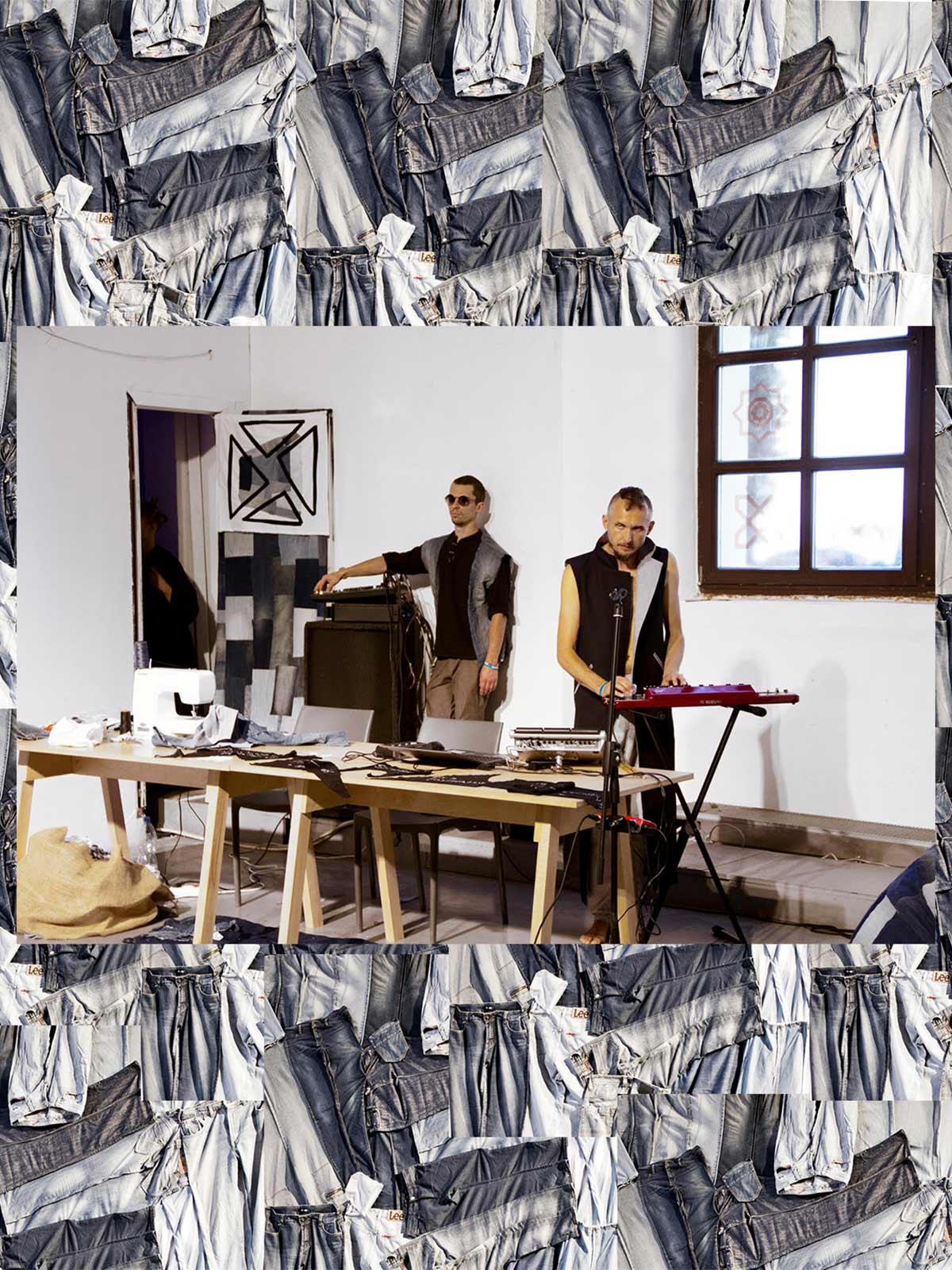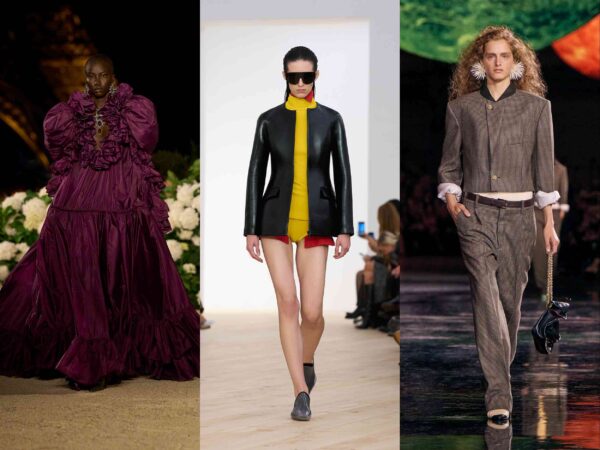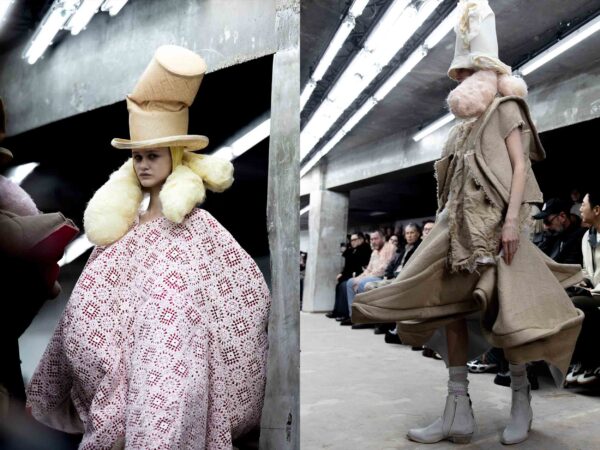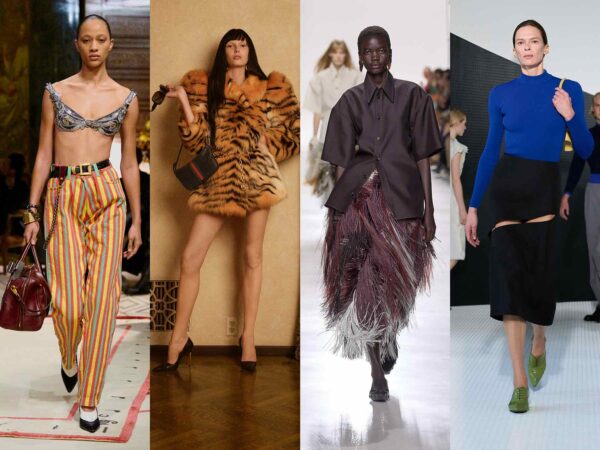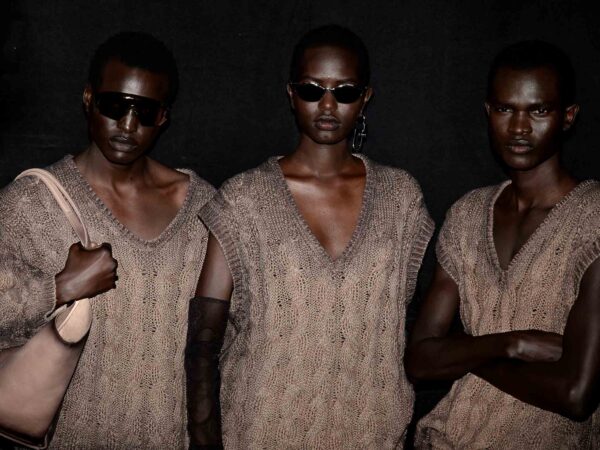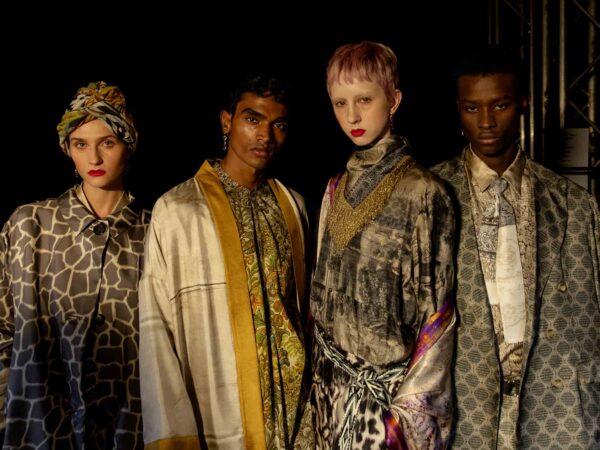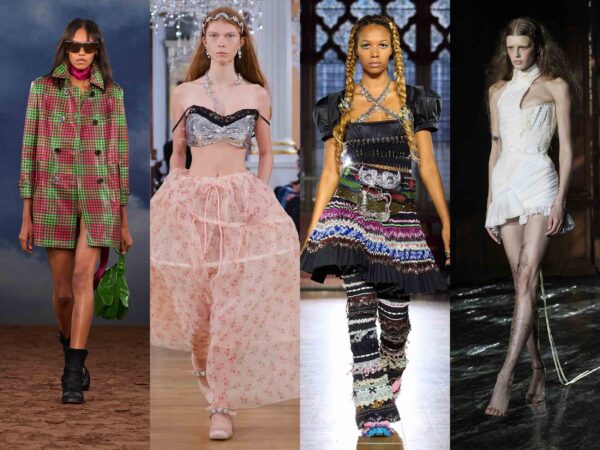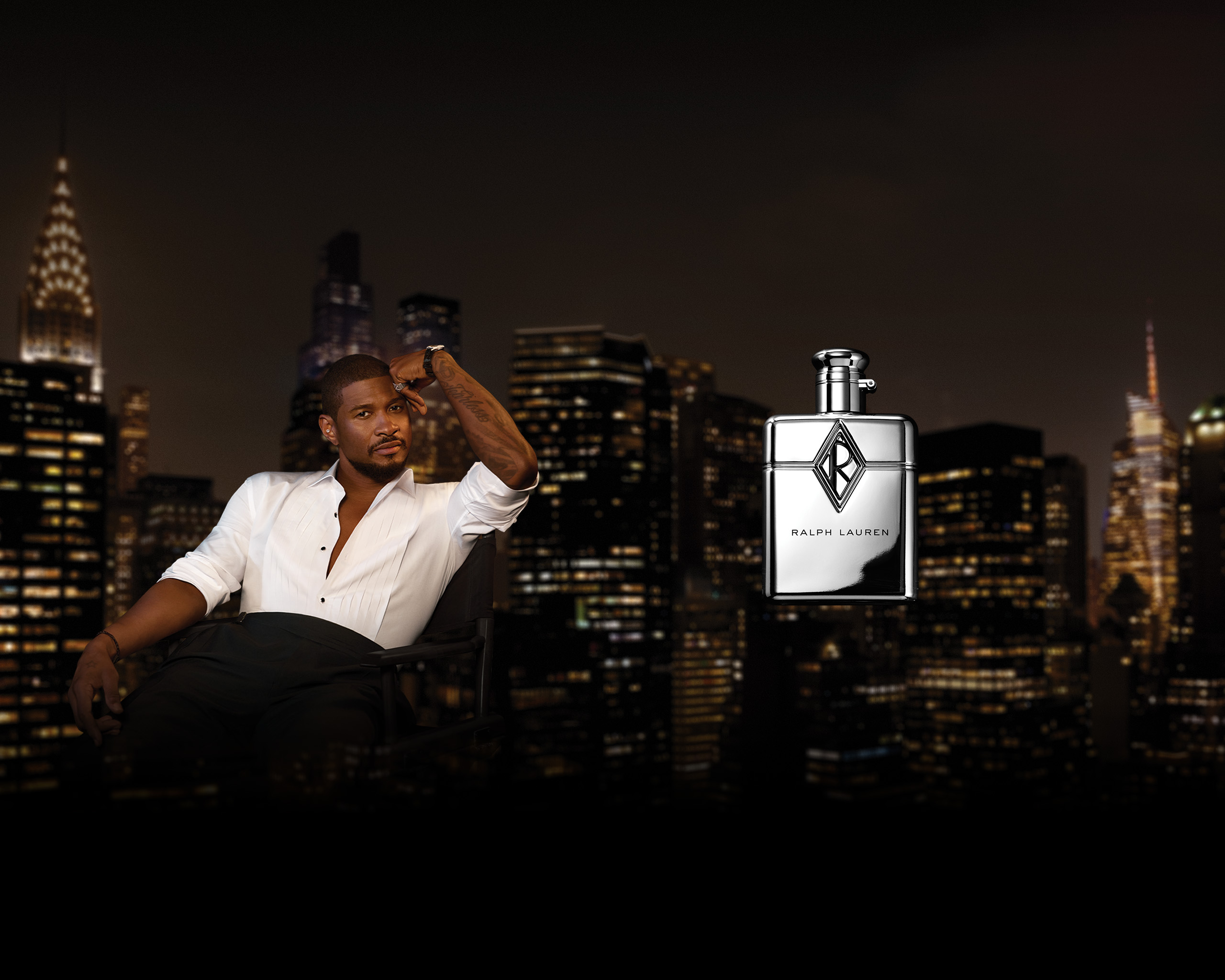30 years ago, wearing denim could get you arrested in Ukraine—now it's everywhere you look. Document delves into Ukraine's recycled denim revolution with local designers Ksenia Schnaider and Ruslan Baginskiy.
At Ukrainian Fashion Week last month, denim was everywhere in every form imaginable. Men wore denim cut-offs with babushka scarves, and women threw denim jackets over evening gowns; pedestrians, waiters, and taxi drivers—at the venue and all around the city—dressed in true blues and full-blown Ukrainian tuxedos.
30 years ago, before the fall of the Soviet Union, any of the above outfits would have been considered a ‘jean crime’ and punishable by law. This wasn’t because state officials had particularly refined fashion sensibilities, but because blue jeans were the ultimate symbol of the West: an unfettered signifier of freedom, rebellion, and capitalism. Jeans first arrived in the 1950s and the people who wore them were often those who travelled abroad, since there were no formal channels to buy Western goods, only a thriving black market. In 1961, two traffickers were even put to death after having been accused of “trafficking in jeans” among their list of crimes—and Levi’s thought Bing Crosby had it rough.
“Two things came to Ukraine when the Soviet Union fell,” explained Iryna Danylevska, co-founder and head of the organizing committee of Ukrainian Fashion Week, since its inception in 1997. “Denim and Coca-Cola!” According to her, in the ՚90s, Kiev was flooded with jeans—mostly from the West and other parts of Europe. “Since then, denim has always been popular with Ukranian designers.”
Certainly, at the Ukranian Spring/Summer 2020 Fashion Week, the ՚90s were heavily referenced, often in a nostalgic manner. Gasanova’s models wore different iterations of denim corsets, dresses, and lightweight high-cut dresses with exposed rhinestone thongs. “It felt very ՚90s, designer Elvira Gasanova said. “The DNA of my brand is hand-painted denim jackets, but now there are too many brands doing that, so I moved on to denim and crystal dresses.” Newly formed brand Klaptyk had decorated an entire room with recycled jeans and bean bags made of vintage denim, while models in upcycled black denim performed an interpretative dance to music by a denim-dressed sound crew. Lallier, a brand mostly known for its party dresses, had patchworked denim with brocade fabrics and overlaid corsets on top of denim dresses. “When it’s mixed with other fabrics, you can wear denim to events, but it’s cheaper than most formalwear,” explained Lallier designer Yuliia Frants. “So, Ukrainian people can buy it.” Dastish Fantastish’s collection was full of post-apocalyptic Soviet motifs including rocket ship outfits, protective corsets, and knee-pads, all emphasized with denim.
“We all want to use denim, but it’s about being more sustainable, because we all know it’s bad for the environment,” Danylevska continued. “We’re looking for designers who are doing the next thing with denim.” For reference, it takes 1.7 million tons of chemicals to produce two billion pairs of jeans every year, with just one pair of jeans requiring up 1,800 gallons of water to produce, according to Greenpeace. Ukraine stands out as a leader in sustainability in terms of denim simply because most of the designers are creating small batches and up-cycling.
Danylevska cited the designer Ksenia Schnaider—while wearing a pair of her flared jeans—as one of the best examples of sustainable denim lines in Ukraine. Ksenia Schnaider might be the most popular label out of Kiev, stocked at American retailers such as ShopBop, Neiman Marcus, Bloomingdale’s. The designer’s collections are constructed from recycled denim sourced from street and flea markets before being reworked in marvellously unconventional ways. She also produced a capsule collection with the sustainable factory ISKO, which included ‘asymmetrical jeans and the Instagram-viral ‘demi-jeans’ worn by Bella Hadid. Using ISKO’s Earth Fit fabric, which is made with organic and recycled cottons and recycled polyester, the environmental impact was significantly lower than the typical denim production process.
Schnaider remembers when she was a little girl in the ՚80s and her parents shared their one pair of blue jeans, only wearing them during special occasions (technically a ‘jean crime’ back then, albeit a common one) and religiously ironing them before each use. She now sources much of her denim from local Kiev flea market Lesnoy, so that each piece ends up being one-of-a-kind. “This feeling from my childhood really inspired me,” says Schnaider. “Because I saw my parents doing this. Most people here have the same memories. Denim is something cool and luxurious.”
Hat designer Ruslan Baginskiy is another highly successful label from Kiev, stocked on Net-a-Porter and Moda Operandi, and worn by Madonna and Alicia Keys. Baginskiy recently released a denim hat collection which completely sold out in the first run. “In Ukraine, the new trend is to be sustainable,” he explains. Ukraine as a nation isn’t necessarily greener than other former Soviet states, despite its government’s claims that,“Since 1998 the cooperation between Ukraine and the EU in the environmental protection sphere [has been aimed at fighting]t the deterioration of environmental conditions, and [embracing] effective monitoring of the pollution levels.” But young Ukrainians aren’t waiting for the government to pave the way for more sustainable production. Baginskiy’s collections are produced entirely in Ukraine by a small team consisting of friends and family. “Most of the fashion brands in Ukraine are using recycled denim.”
“Personally, I wear jeans seven days a week,” explains Schnaider. “So, it was very organic to start working with this material. I know what kind of jeans I want, and I knew from the very beginning [that] I wanted to make something very avant-garde and different.” Schnaider explains that she first started using denim in her line in 2016. “At that time, it was really difficult to find facilities, productions, and everything else. It was an entirely new territory for Ukrainian brands. We have only two facilities that can wash denim in Ukraine, and it’s not enough.” That’s because denim, though the demand is high, is still a relatively new material for Ukraine—only having been produced for a little over 25 years in bulk since the fall of the Soviet Union. Schnaider recently released a line of denim ‘fur’ coats made from the recycled scraps of her previous collections. She also has other ideas to minimize waste, such as the recycled denim couch that sits in her new studio.
Klaptyk, quite rightly, credits Ukraine’s denim obsession simply to the resourcefulness of its people. “We now have a lot of used denim in Ukraine from other European countries,” says the designer Inna Pavlichuk. “It’s a very cheap material. You can buy a half ton of denim for $20. There’s too much used denim here in Ukraine, and we need to do something with it.”


